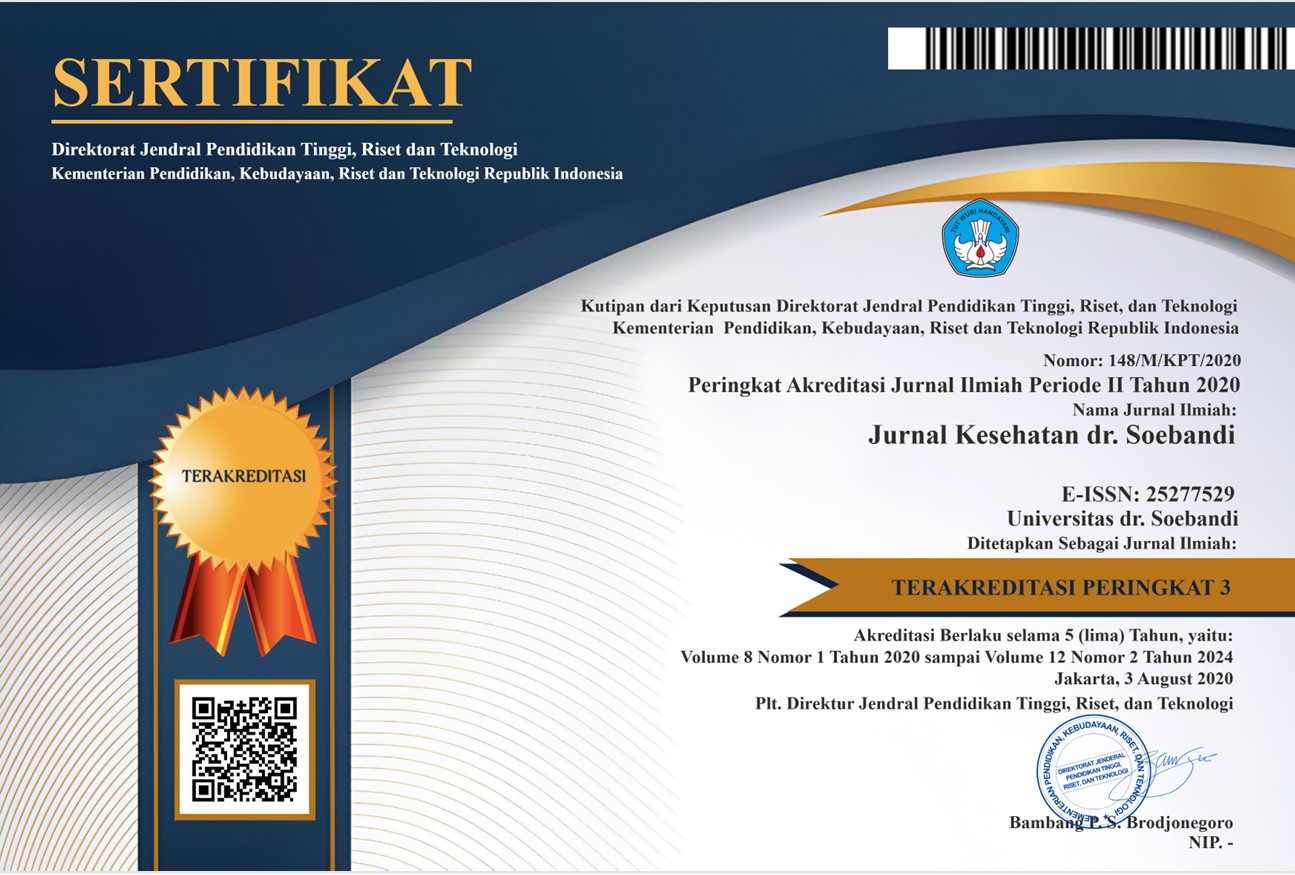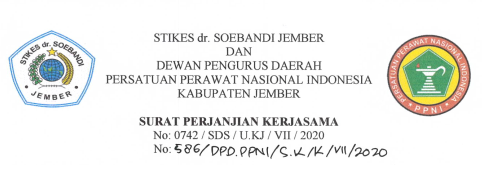Knowledge Level of Prospective Bride and Groom about Pre Marital Check Up at Religious Affairs Office Kaliwates
DOI:
https://doi.org/10.36858/jkds.v11i2.456Abstract
The problems of Maternal Mortality Rate (MMR), Infant Mortality Rate (IMR) and stunting in Jember Regency need to receive comprehensive attention. Because this is a complex issue and involves all parties. Pre-marital examination is an effort that needs to be done for couples to suppress these problems. Pre-marital examination is important for the bride and groom to see their health condition in order to prepare for a healthy pregnancy and produce healthy offspring. The purpose of this study was to see the level of knowledge of the bride and groom about Pre Marital Check Up at KUA Kaliwates, as well as to optimize pre wedding classes for the bride and groom. This type of research is descriptive analytic with a cross sectional approach, data collection with research questionnaires. The sample in this study were all 60 prospective bride and groom couples at KUA Kaliwates. This research was conducted in June 2022 and used total sampling methode. Data analysis using frequency distribution. The results showed that 60 respondents (69.8%) consumed Folic Acid, 55 respondents (64%) consumed Fe tablets, 51 respondents (59.3%) received TT Immunization. Most of the prospective bride and groom have a good level of knowledge (65.1%) about Pre Marital Check Up and the rest have a sufficient or insufficient level of knowledge. So it can be concluded that health education related to Pre Marital Check Up must still be carried out as a preventive and promotive effort to improve the health status of women as prospective mothers.
Keyword: Knowledge Level; Bride and Groom; Premarital check up








